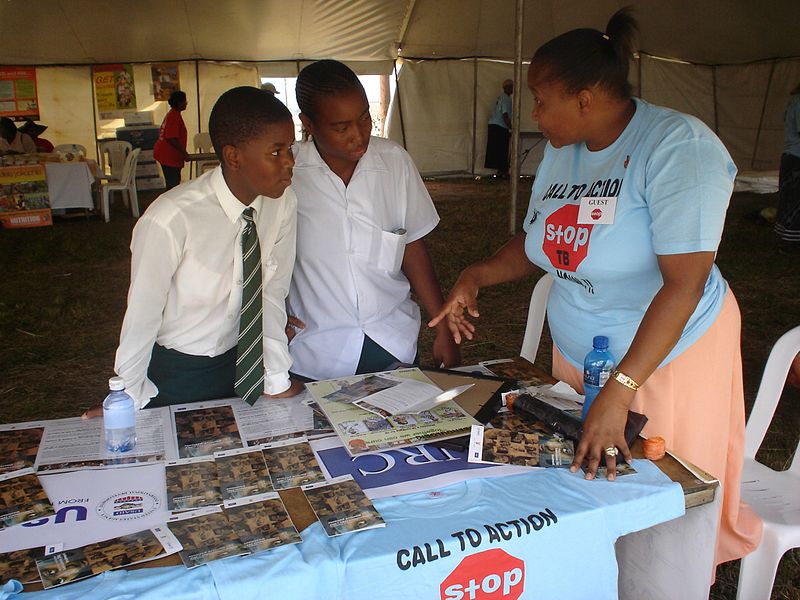When I did some work for the United Nations in tiny Lesotho some years ago, one of every three people in the country was infected with HIV or AIDS. It was all quite chilling. One of every three people I met would soon die an appalling yet preventable death. How do you get your head around that?
In Lesotho, as everywhere else in those days, few people were being tested and only a few of those diagnosed as positive received medication, which cost a small fortune at the time. No one had a clue what to do with the growing population of orphans other than to thank their stars for grandmothers. There was a feeling that the country would soon cease to be a viable entity. At the same time, all of Southern and East Africa endured similar ravages. Yet even Nelson Mandela failed to take the crisis seriously, as he later sadly acknowledged. Truly, it seemed the apocalypse had come.
Thanks to the tireless efforts of a few dedicated activists, the tide eventually began to turn. As Geoffrey York reported in The Globe and Mail, there is much to celebrate this World AIDS Day: “Globally, the number of AIDS-related deaths has dropped by a remarkable 29 per cent since 2005. Access to antiretroviral drugs has expanded more than 40-fold worldwide in the past decade, and the number of new HIV infections has dropped by 33 per cent in the same period.”
But as Mr. York also made clear, “massive challenges and misunderstandings still remain, especially in Africa.”
In honour of World AIDS Day, AIDS-Free World, a small but gutsy international NGO (with which I was once associated), listed those “challenges and misunderstandings.” Here are only a few grim highlights to ruin your day:
– 35 million people globally live with HIV, the vast majority still in sub-Saharan Africa.
– 16 million children have lost a parent to AIDS
– In many countries AIDS deaths have actually increased
– Only one third of those who need drugs are getting them.
– Among sub-Saharan Africa’s 15-24 year olds, the rate of HIV for females is two-and-a-half times the rate for males.
Now what? Although much is being done on the AIDS front, somehow there is never as much money available as experts deem necessary. It’s a tired old story and it’s hardly ever about scarcity. As always, it’s about political will and priorities. Governments somehow always find money for the next war or the next tax break or for whatever it takes to help them in the next election. Maybe that’s human nature.
This week the Global Fund to Fight AIDS, Tuberculosis and Malaria was seeking pledges of $15-billion to pursue its vital work for the next three years, or $5-billion each year. That would have helped 85 per cent of those in need; I guess they considered that the realistic target. Instead, it received $12-billion. Sounds like a lot, but it’s only $4-billion a year for the entire world to fight three of humankind’s greatest scourges. And it’s only enough to help two thirds of those who need it. Who helps the millions who constitute the unlucky 33 per cent?
So the rich world pledged $4-billion a year instead of the $5-billion sought. How much is that $1-billion? It’s life and death for countless Africans. But in our world? Jeffrey Sachs makes it clear:
– It’s less than the $1.3-billion 2012 paycheque of hedge fund owner and inside-trader Steve Cohen
– It’s 0.019 per cent of the wealth of the world’s 1,426 billionaires
– It’s 5 per cent of the Christmas bonuses on Wall Street
– It’s far less than the taxes evaded annually by Amazon, Google, and Facebook
In Canada, knowledgeable civil society groups argued that this country’s fair share for the Global Fund should be $750 million; the government offered $650 million, or about $215 million a year. That’s equal to about $6 per Canadian, while the Nordic countries pledged an average of $10 per citizen. $660 million is also what the Harper government committed to Toronto Mayor Ford for his dubious Scarborough subway scheme. The government routinely spends between $50 million and $100 million a year on partisan advertising. Where there’s a will, there’s the dough.
Or the legislation.
The Government of Canada marked last year’s World AIDS Day by defeating a bill making it easier for generic drug companies to manufacture cheaper generic AIDS drugs for Africa. The year before, in a minority situation, the government called on their compliant Conservative majority in the Senate to kill a similar bill that had actually passed the House of Commons. The cost to the government would have been nothing but the displeasure of Big Pharma.
Dr. Julio Montaner, a Canadian universally recognized for his expertise on HIV and AIDS, argues that “The government of Canada’s leadership in the fight against HIV/AIDS is long overdue.” After this week, it still is.
Image: wikimedia commons



